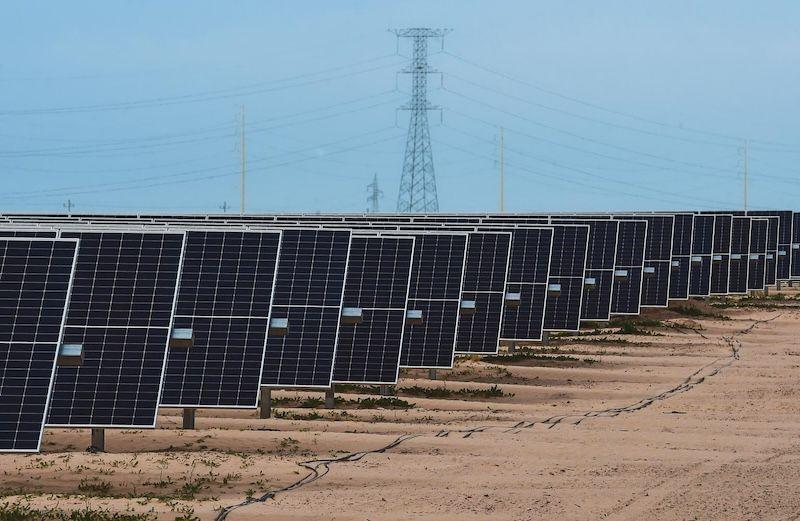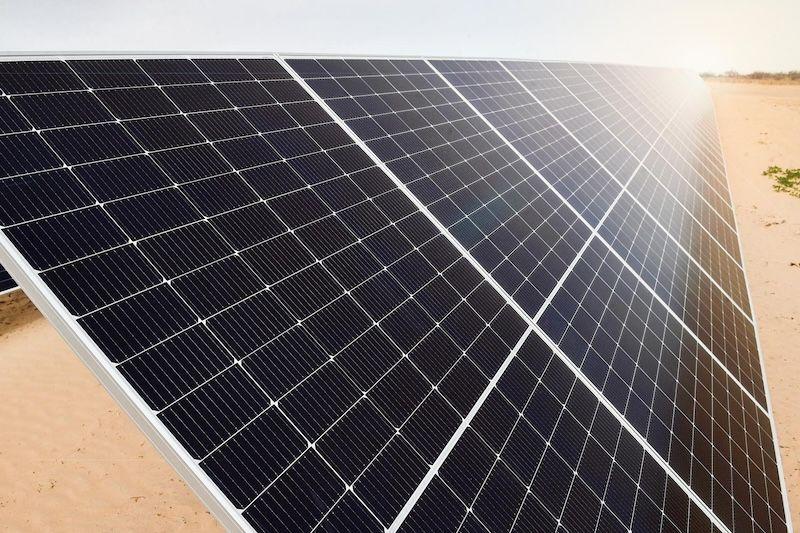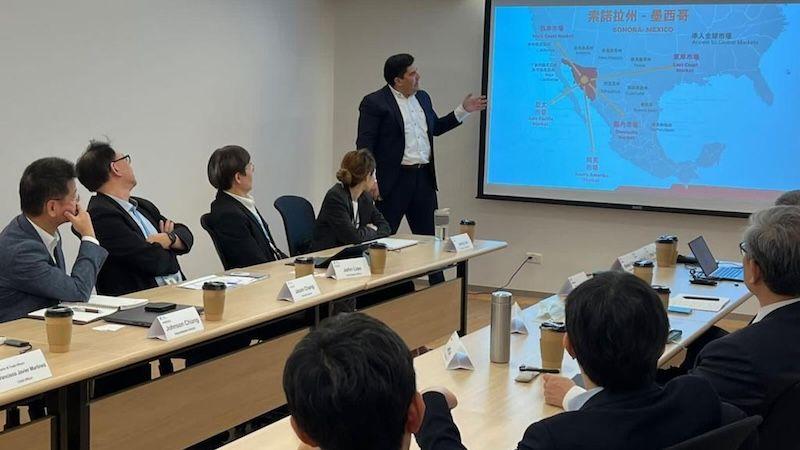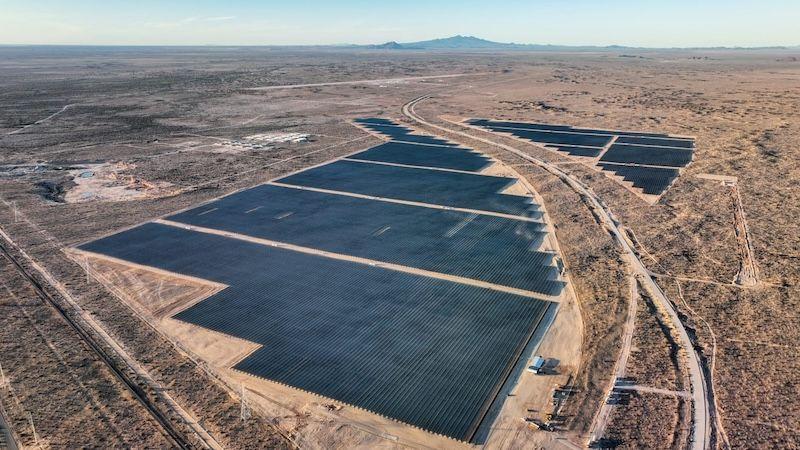In the midst of a six-year period of energy projects focused on fossil fuels in Mexico, a megaproject for renewable energy emerges. The Sonora Plan, which is being developed in the homonymous state in the northwest of the country, seeks to increase electricity generation through the construction of a solar park - operated by the Federal Electricity Commission (CFE) - and lithium mining.
The project was officially announced in February 2023 by the governor of Sonora, Alfonso Durazo Montaño, during an event with more than 132 diplomats from countries such as the United States, Canada, Russia, Ukraine, France and Japan. And the promotion went all the way to the Conference of the Parties (COP) 28 in Dubai, United Arab Emirates, last November.
The Sonora Plan also includes the construction of infrastructure for six science parks, the modernization of the port of Guaymas and six border points, among other complementary actions. The total investment is estimated to be 7 billion dollars, according to official figures.
However, criticisms and concerns have arisen from energy specialists about the measures that have been taken with regard to the environmental and social impact that a megaproject like this can bring, as well as because of the obstacles to distributing the energy produced.
“The positive thing is that this project escapes energy policy that favors fossil fuels. The negative is probably that, from my point of view, I would be arriving late. I think the administration was slow to develop and build projects that contemplate renewable technologies,” says Arturo Carranza, energy analyst and director of energy projects at AKZA Advisors.

First phase of the Puerto Peñasco photovoltaic plant. Photo: Sound Plan for Sustainable Energy.
The largest solar plant in Latin America
In the Sonoran desert, the masterpiece of Plan Sonora is being built: the photovoltaic plant in the municipality of Puerto Peñasco. A CFE property promoted as the largest solar park in Latin America, whose construction is divided into two phases. The first one was inaugurated in February last year, when the plan was announced in its entirety, with a capacity of 120 megawatts. While the second one is still in progress and will have a capacity of 320 megawatts.
The estimated generation would bring benefits to 1.6 million people, which represents supplying 536,000 homes, according to figures from the CFE.
“This project has positive aspects and questionable aspects, but in any case what is not under discussion is that it represents a watershed of what this administration has done to add megas to the national electricity system and depending on that I think it is relevant,” explains Carranza.
The main challenges of a megaproject like this, according to the energy analyst, are environmental.
“I would start by recognizing that any energy project has an environmental impact and I believe that it is the responsibility of the authorities to enforce the Environmental Impact Manifestations (MIAs) and that the companies responsible for developing and building the projects fully comply with them.”
MIAs are technical-scientific studies submitted by the companies responsible for the projects to the Ministry of Environment and Natural Resources (Semarnat). These indicate the guidelines of the works, the type of impacts they may cause and the proposed repair measures.
In the case of the photovoltaic plant in Puerto Peñasco, it is a construction that covers more than 2,000 hectares. The MIA, presented by the CFE in October 2021, was classified as a “Unified Forest Land Use Change Procedure. Mode B without risk”. The reason for the classification is the clearing of vegetation at the beginning of the works, for which measures such as the relocation of flora and fauna and reforestation programs are proposed without specific specifications on implementation or quantity.
“Yes, there is an impact on the soils. What type of soil is it? What type of fauna? How does it alter the communities there? I believe that every energy activity must have its environmental impact assessment and its social impact assessment,” says Manuel Martínez Fernández, a researcher at the Renewable Energy Institute of the National Autonomous University of Mexico (UNAM).
Regarding social impacts, the MIA mentions that, although the property belongs to the CFE, it borders communities in the Estero La Pinta and Estero Aquiles Serdán ejidos, but specialists are concerned that there has been no citizen consultation process.
“What should have been done? First of all, talk to communities and really ask them what their needs and capacities are for their community development, and also to see what type of fauna and flora there are and how it will be modified. Not because it's the Sonoran Desert, you don't have to do it anymore. Nor because there are small communities, we should not take them into account,” added researcher Martínez.
For this publication, the CFE was contacted to find out what happened with the consultation process, but as of the closing date of this edition, there has been no response.

Solar panels in Puerto Peñasco. Photo: Sound Plan for Sustainable Energy.
The extraction of white gold
In Mexico, the exploitation of lithium is a recent topic. This is an alkali metal, known as “white gold”, which mixed with other compounds is used to manufacture batteries, cell phones, glasses and ceramics.
In recent years, lithium has gained importance in the energy transition because of its role in the manufacture of batteries that range from those used in electrical grids to electric cars.
In February of last year, President Andrés Manuel López Obrador went to Bacadéhuachi, Sonora, to sign the decree to nationalize lithium. What classified the mineral as property of the nation for exploration and exploitation. On the occasion, the president was the subject of criticism.
However, a few months later, Alejandro Armenta, president of the Senate, reported that there were 18 states in Mexico where most of the lithium deposits were concentrated. Sonora is in the lead with 13. Added to this announcement was the creation of “Lithium for Mexico”, a decentralized body to verify potential reserves and regulate investment.
Finally, lithium extraction formed one of the pillars of Plan Sonora.
“I think it was an announcement that has not been followed up enough by the authorities in terms of the investment needed to take advantage of a very specific situation that has to do with the use of lithium as a raw material to produce, for example, batteries for electric cars. In any case, I believe that Mexico does have potential, but the model it is following of reserving it to the Mexican State will slow down the possibility of exploiting this material for the purposes mentioned above,” says Carranza.
Although there is not yet a detailed plan for how lithium will be extracted in the country, it is necessary to take into account the impacts that have been documented related to the activity, such as salinization of wetlands, contamination of freshwater reserves, alteration of lake systems, and others mainly related to soil and water.
A Silicon Valley in Sonora
The term “Silicon Valley” was popularized in the 1970s to refer to the headquarters of then emerging technology companies such as Apple, Facebook and Google, in San Francisco Bay, California. Currently, the name has become a reference for regions that concentrate technological industries. The Sonora Plan has been no exception at the media level.
In part, this is because, in addition to the photovoltaic plant in Puerto Peñasco and the extraction of lithium, the development of science parks was also considered. The objective is to have centers designed to ensure the availability of the infrastructure required by the industry in the development of this plan.
Added to this are the works grouped together in “Northwest Logistics Gate”, which is part of the investment aimed at the modernization of the Port of Guaymas; the integration of the airports of Guaymas and Ciudad Obregón; the modernization of six border points; the construction of railway tracks in Nogales; and the modernization of the checkpoint in Querobabi.
In addition, a Sonoran Research Committee composed of experts from the University of Sonora, the University of Texas, the Center for Research and Advanced Studies (Cinvestav) of the National Polytechnic Institute, among others, was established to develop content from which new careers related to semiconductors and the use of lithium emerge.
The government of Sonora has been responsible for promoting all these actions on a tour of European countries, as well as the United States and Taiwan. Meanwhile, in the national scenario, the lack of details on the breakdown of each line of work generates uncertainty about compliance with environmental regulations.
“Beyond the economic relevance of the project, it will be important to work to minimize its environmental impact. Most of the components of the plan rightly face demanding requirements in Mexican legislation, in addition to the fact that the Sonoran government foresees several indirect effects that must also deal with regulations that, fortunately, are very demanding,” said the Mexican Center for Environmental Law, A.C. (CEMDA) in a statement entitled “The Mexican Sonora Plan: a challenge for environmental law.”

Presentation of Plan Sonora to Taiwanese technology industries. Photo: Sound Plan for Sustainable Energy.
The promise of renewable energy in Mexico
The Sonora Plan stands out as the flag of renewable energy in a six-year period that has prioritized its investment in national companies such as Petrleos Mexicanos and megaprojects such as the Dos Bocas refinery.
“The energy generation permits that have been granted (this administration) are mainly for the Federal Electricity Commission and this one in its generation portfolio depends mainly on fossil sources,” explains Arturo Carranza.
Despite warnings about climate change and international forums to take action, carbon dioxide (CO2) emissions in Mexico have been maintained. Therefore, the federal government insists that the photovoltaic plant in Puerto Peñasco will prevent the emission of up to 1.4 million tons of CO2. The equivalent of curbing the polluting emissions of 270,000 vehicles.
But one of the main doubts is whether this project will be sufficient to maintain the direction of the next six-year period towards renewable energy, considering that the increase in renewable energy generators creates stress on the networks of the national electricity system.
“There is a very clear need to modernize and strengthen what has to do with transmission and distribution networks,” Carranza adds.
For his part, researcher Manuel Martínez highlights that if important actions are taken, up to 80% of electricity would be covered by renewable energy by 2050. But everything will depend on the decisions that are made.
“If they are not promoted (to renewable energies) they will continue with an order of 20% or 25% in the medium and long term, but if they are boosted it could be 55%. And if Mexico really wants to be a leader in this field, it can be one and then reach 80%,” Martínez concludes.
*This text was produced with the support of Climate Tracker Latin America.



Comentarios (0)